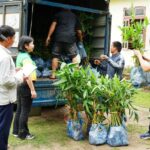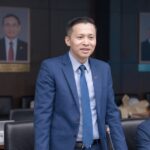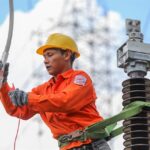A Decade of Co-creation: Embracing International Standards
With over three decades of establishment and development, Nam Long has cemented its pioneering position in the field of sustainable real estate in Vietnam. Going beyond domestic achievements, Nam Long is also one of the few enterprises capable of maintaining long-term international cooperation, especially with renowned Japanese corporations known for their discipline and stringent standards.
The most distinct mark of this capability began a decade ago when Nam Long officially partnered with Hankyu Hanshin Properties Corp. and Nishi Nippon Railroad Co. This was not merely an investment deal but a turning point in the commitment to co-create sustainable value.
Amidst the myriad challenges of Vietnam’s transitioning real estate market, Nam Long chose a different path: not going alone but walking alongside partners from a culture renowned for its meticulousness, discipline, and long-term development mindset.
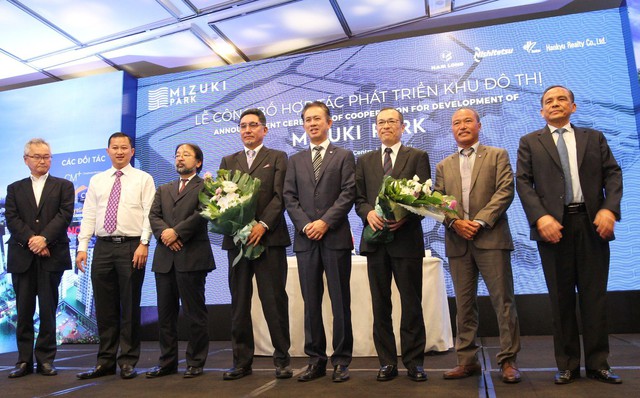
Nam Long is one of the few real estate developers in Vietnam maintaining long-term cooperation with Japanese partners.
For Japanese partners, the concept of cooperation goes beyond mere investment. They inquire about development philosophy, business ethics, and faith in long-term relationships. Nam Long entered this relationship with actions: transparency, consistency, and steadfastness in the tenet of “co-creating communities and sustainable development.”
Nam Long does not view these Japanese corporations as mere “investors” but as “co-creators.” This reflection is evident in their role division: The Japanese partners bring decades of experience in developing integrated urban areas, advanced technology, modern planning concepts, and a robust ecosystem that has stood the test of time. Meanwhile, Nam Long, as a local investor, possesses a profound understanding of the market, legal framework, and local culture, enabling the adaptation of international strategies to suit the needs, culture, and lifestyle of Vietnamese people.
There is no one-size-fits-all “Japanese formula” imposed on the Vietnamese market. Instead, each project is a dialogue between international vision and local identity, between the cautiousness of the Japanese and the flexibility and agility of a seasoned Vietnamese enterprise.
This harmony does not stem from luck but from steadfastness in vision, approach, and the belief that real estate is not just a place to live but also a place for human holistic development. And after a decade, this relationship has manifested in urban areas that embody the future while remaining intimately connected to the Vietnamese people.
From a Strategic Handshake to a Value System that Spreads throughout the Community
The decade-long journey between Nam Long and its Japanese partners is not just about numbers, contracts, or groundbreaking ceremonies. It is a quiet and persistent endeavor to establish a new standard of living for the Vietnamese urban community.
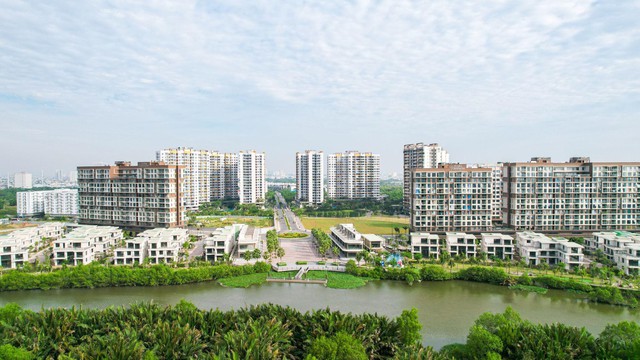
Mizuki Park symbolizes the perfect blend of Japanese culture and modern lifestyle.
On the map of Vietnamese urban areas, names like Mizuki Park, Akari City, and Waterpoint have not only become homes to thousands of families in recent years but also symbols of a new approach to urban development.
Mizuki Park, the pioneer of integrated urban development in the relationship between Nam Long and its two Japanese partners, showcases the love for nature and the Japanese spirit of “getting it right from the start” in its meticulous planning of standalone apartment clusters and low-rise townhouses in harmony with nature. More than 71% of the urban land is allocated for parks, canals, Japanese islands, and public utilities, shaping one of Vietnam’s top ten most livable urban areas.
While Mizuki Park exudes the serene spirit of Zen, Akari City, located on the vibrant Vo Van Kiet axis, embodies the Japanese spirit in a modern way, designed as a “multi-utility residential city.” Introduced in 2019, Akari City is now home to over 3,000 families, forming a dynamic and civilized “city of light” at the gateway to Ho Chi Minh City’s western area.
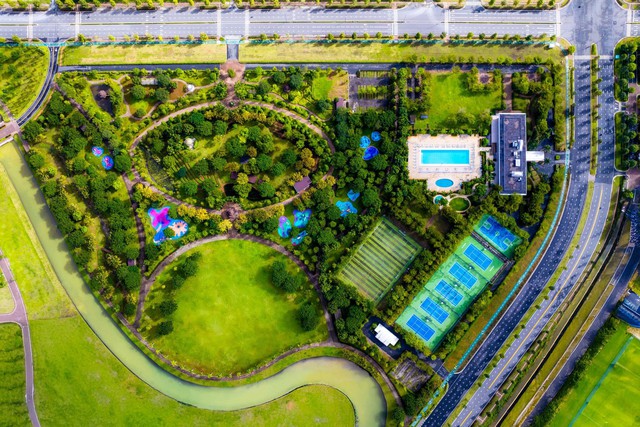
Waterpoint – where nature blends seamlessly with every resident’s experience.
Waterpoint, nestled alongside the Vam Co Dong river, is developed with the passion of leading urban developers. The urban area boasts over 65 hectares of green space, 30 hectares of water surface, and an all-in-one urban utility system, catering to the diverse needs of its residents. Most recently, the Vietnam-Japan Cultural Village, a symbolic project of the amicable relationship between Nam Long and its Japanese partners, has commenced operations, becoming a prominent destination.
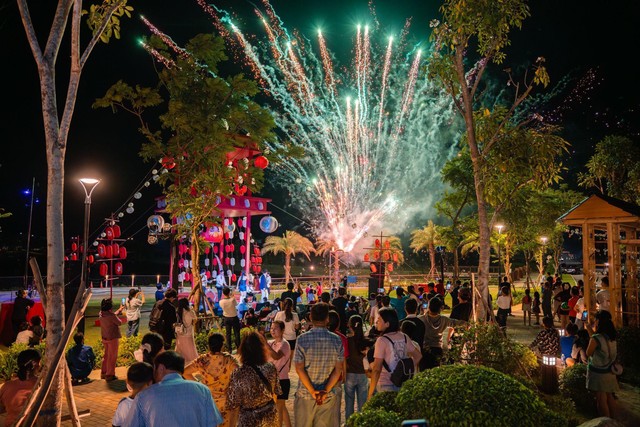
Nam Long prioritizes the philosophy of “putting people at the center” in its urban development projects.
Each urban area serves as a “living laboratory” for the Vietnam-Japan cooperation model. Every step and experience of the residents reflect the unwavering efforts toward sustainable development. Despite market fluctuations, these projects maintain liquidity, stability, and resident satisfaction—an achievement not easily replicated.
Going beyond planning, architecture, or operations, each project also contributes to transforming the local landscape by creating job opportunities, promoting multi-sector economic development, services, and cultural enhancement. These values permeate beyond the urban areas, influencing how people perceive “a livable place.”
More importantly, this relationship proves that a Vietnamese enterprise can master global connections with a strong will, clear philosophy, and long-term vision. It is a testament to genuine cooperation and companionship, a spirit of “going far together,” unfazed by challenges, immune to short-term gains, and steadfast in its long-term mission.
A decade of cooperation is just the beginning, laying a solid foundation for the upcoming “decades,” fostering deeper and more comprehensive collaboration, not only with Japanese partners but also with other international associates.
The vision of a modern, livable, and sustainably developing Vietnam will be realized through mega-urban projects spanning hundreds of hectares, such as Waterpoint and Izumi City, and premium real estate segments like The Pearl and Nam Long Dai Phuoc, which are akin to heritage. In these endeavors, the understanding, experience, and capabilities of each party will continue to synergize, creating modern and high-quality urban ecosystems that perpetually spread positive values to the community, society, and the future of both countries.
“VisaO2: Leading the Charge Towards a Greener Future with Every Transaction”
In a world where sustainable consumption is gaining traction, the Sacombank Visa Platinum O₂ credit card (Visa O2) emerges as a groundbreaking financial solution. This card innovatively quantifies carbon dioxide emissions for each transaction, empowering users to understand the environmental footprint of their spending habits.
“MB – TTC AgriS: Forging a Sustainable Agricultural Finance Ecosystem”
On May 8, 2025, TTC AgriS (HoSE: SBT) and Military Commercial Joint Stock Bank (MB, HoSE: MBB) forged a strategic partnership, envisioning the development of a comprehensive digital Agriculture-Finance ecosystem.
The Billion-Dollar Species: Vietnam’s Treasure Trove of Exotic Exports.
The product is one of Vietnam’s key exports and a cornerstone of its thriving economy. With a rich history and a unique, distinctive flavor, this good has become a global favorite. Grown and crafted with care, it embodies the essence of Vietnam’s diverse and vibrant culture, offering a taste of its vibrant landscapes and rich heritage.
Unveiling the Three Critical Flaws in Vietnam’s Current Electricity Pricing: An Expert’s Perspective.
Let me know if you would like me to continue crafting content with this imaginative and polished tone.
“Experts advocate for a well-planned, transparent, and market-oriented roadmap for electricity price adjustments. This approach aims to accurately reflect the underlying costs without inflicting a ‘price shock’ on consumers and the economy.”


